Our Blog
Meet our Latest Wine!
Succo di Aleatico
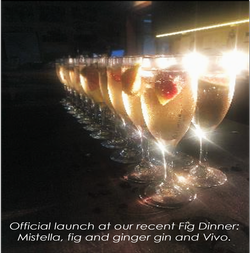
We are excited to introduce the newest addition to our di Lusso Estate range - Succo di Aleatico - a complex and intriguing mistella.
Succo di Aleatico is made from the juice of our Estate-grown Aleatico and barrel-fermented grappa.
Aleatico’s luscious candy flavours when blended with the grappa produce a 'wine' with a beautiful golden colour, late harvest flavours of apricot, marmalade and peach, and a spicy finish.
Not as sweet as a dessert wine, Succo di Aleatico can be enjoyed with baked desserts or after dinner with hard cheeses... or at any time, as a mixer - on ice, with di Lusso Estate Vivo! and lime.
Available now for $40 + shipping
Origins
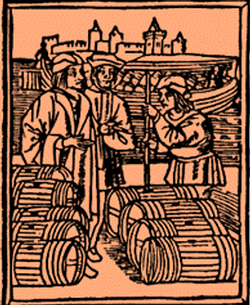
Mistella in some form, has been produced for over 300 years throughout the wine-producing regions of Europe, so there is some debate over its origins.
One theory is that Mistella was first developed by the Dutch to increase the shelf life of wine for transportation by ship (the addition of grappa would have killed any fungus or bacteria in the barrels).

Another story goes that at some point in history, a careless worker at an unknown distillery or winery tipped some brandy into a barrel, not realising it was two-thirds full of juice, thus serendipitously creating the local aperitif. Versions of this happy accident are told in pretty much every mistella-producing region.
I am perhaps more persuaded that our heroic workers simply combined two delicious liquids in the age-old spirit of enquiry.
Suffice it to say that this style of drink has a long history in Italy, Spain, and some of France’s grape-growing regions (notably Cognac and Armagnac).
Winemaking
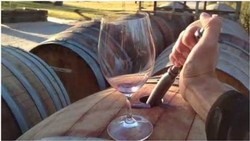 The Italian term Mistella, sometimes called Sifone, means the same thing as the French Mistelle and the Spanish Mistela: a mixture of grape juice and alcohol. Its claim to fame, as it were, is that the base juice does not undergo fermentation.
The Italian term Mistella, sometimes called Sifone, means the same thing as the French Mistelle and the Spanish Mistela: a mixture of grape juice and alcohol. Its claim to fame, as it were, is that the base juice does not undergo fermentation.
The Aleatico mistella was stored for three months in stainless steel tanks, and then wine spirit (grappa) was added. After that, we moved it into used French oak barrels. It rested for over two years.
From the very first time we tasted the blended wine, it was clear the flavours were interesting and unique! The final result is a tribute to creative winemaking and a special variety.
For our mistella, we chose the versatile Aleatico grape (which is also used in its raisined form in our Tuscan-style Vin Santo offering, Appassimento, in some of our Vino Rosato vintages, and of course, in our Aleatico wine itself).
Salute!
A Challenging Harvest
Harvest time
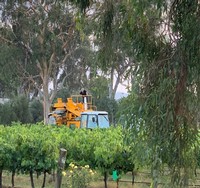
Before an enterprising American wine reviewer and writer named Robert Parker came on the scene in the 1970s, one couldn’t rely on ‘vintage reports’ for accurate assessments of the quality of a region's harvest.
Before his arrival on the scene, harvest reports were basically put out by the trade to sell wine. As I think about it, some still are!

Rain and temperature are the two factors that will either make or break your vintage.
Neither were in our favour this year, with low spring temperatures and inconsistent but mostly very high rainfall experienced from September onwards - including, most recently, March.
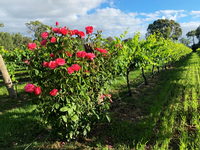
In summary, Sangiovese, Vermentino and Barbera suffered most, whereas our Nebbiolo, Lagrein, Arneis and Aleatico produced crops that though somewhat light, will produce good wines.
(I’m assuming a good outcome for Lagrein and Nebbiolo. As I write this report, it's bucketing down for the fourth day in a row. One more day’s rain, and I reckon we’ll have no reds at all in 2022!)
Elsewhere on the farm...
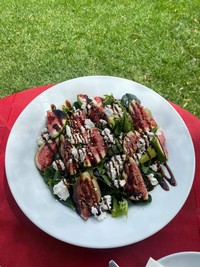
Our figs, on the other hand, after a late start have since early March been delivering beautiful fruit – which is now forming the basis of some lovely Autumn menu dishes (like our delicious Fig Salad!)
Fresh figs are also available for purchase from the Cellar Door.
And olives? What olives. After the bumper 2021 season, they’re having a rest, as they tend to do.
Our new release Vino Rosato
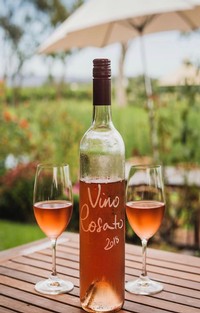
As I feared, our Sangiovese-based rosé from the 2021 vintage didn’t manage to last till the 2022 release – it was a very popular wine indeed. To make matters even more challenging, we have no 2022 Sangiovese fruit with which to craft its successor. (We make our rosé by using the French saigné method of ‘’bleeding” free-run juice from the base wine – in our case, Sangiovese - to arrive at a savoury, food-friendly wine rather than a fruity one.)
So instead, we decided to use a different method altogether by simply blending a 2021 Sangiovese with a 2021 Fiano post-fermentation (a practice which is actually prohibited in Europe — except for the making of rosé Champagne).
After adjusting slightly for sugar, we bench-trialled the result until we got close to the flavours and textures of the 2021 Vino Rosato of di Lusso Estate. This blended method will remain a fall-back option only.
Light at the end of the rainbow
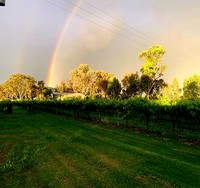
Despite the many challenges sent us by the weather and supply chain disruptions, we look forward to some great upcoming events at the Estate.
In addition to our Fig Dinner, we have our Concert and Canapes on Easter Sunday and plans for movie nights over the next few months. We will keep you posted!